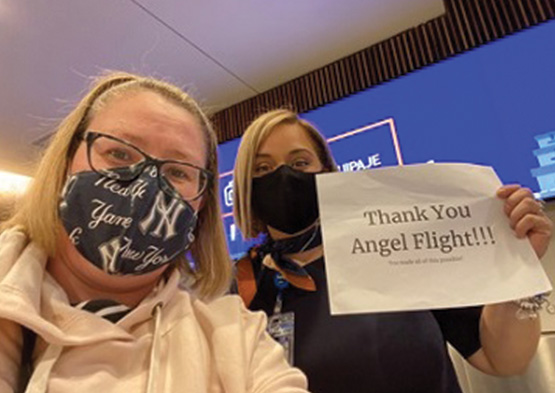Angel Flight NE’s Sponsor, JetBlue Flies Florida Patient to New Jersey

We’d like to introduce you to a young woman from Orlando, FL living with a Chronic Neuro-Inflammatory disorder that affects each day of her life. Erin had finally found an amazing doctor to treat her rare disorder but was required to travel over 1,000 miles to see him! Luckily, after some encouragement from a friend and a brief online search – she discovered Angel Flight of New England through our sister organization in Florida.
In December 2021, Erin travelled on JetBlue to Ivy League Pain Management Center in New Jersey to meet with a renowned specialist. Her round-trip journey was provided completely free of charge made possible by the amazing partnership we have with JetBlue and the support of the Alexion Charitable Foundation. Erin shared her thanks during her trip with all the agents she encountered, what an amazing way to spread the word!
Erin is not quite sure what the future holds for her healing journey, but we have assured her that Angel Flight NE will be here to assist for as long and as often she needs our help. This is just one example of how our mission with the support of our amazing volunteer pilots, along with you, is making a difference in the lives of our patients and their families. We are truly blessed!
Our Sponsors and Supporters
All of our corporate sponsors are absolutely amazing including our commercial aviation partners – JetBlue and Cape Air – who not only generously donate unlimited seats on their aircraft but embrace our patients and families with love and support during their healthcare journey. And the generous support of the Alexion Charitable Foundation with a grant that assist patients with rare & ultra-rare diseases, like Erin’s.
Thank You and God Bless You for your support and belief in our healing mission.
With your help and belief in our mission, we are able to ensure that distance is never an obstacle for patients to access the specialized medical care he needs.
 Pilot Login
Pilot Login 